| Lesson 5 | Aliases and virtual directories |
| Objective | Benefits of using aliases/ virtual directories. |
Aliases and Virtual Directories
A virtual directory allows you to serve up a file or series of files from any area of the system's hard drive.
Many professionals refer to a virtual directory as an alias. From a technical standpoint, a virtual directory allows a Web server to map a URL path name (seen in the browser) to a local file (seen as you access the hard drive locally, say through a file management program) anywhere on the hard drive.
Some of the advantages of the flexible mapping of URL path names to local file names include:
Some of the advantages of the flexible mapping of URL path names to local file names include:
| Advantage | Explanation |
| The ability to serve files that do not reside immediately beneath the Web server root directory | Most Web servers require that all files be located directly beneath the Web server root. However, a virtual directory allows you to include any local file or folder into the Web server directory structure, regardless of its location. You can establish a virtual directory on another system, if you wish. |
| Simplified organizational structure | Instead of having to locate all files and folders beneath the Web server root, an administrator can arrange files on disk at his or her discretion. |
| Cleaner URLs | Although this is a minor issue, the URL shown in the viewer's browser reflects the site's organization, enhancing the viewer's ability to navigate and enjoy the site. |
Virtual Directory
The Slide Show below is designed to show you how a virtual directory allows you to access files from any location on the hard drive.
It starts by showing you how a Web server searches for documents by default, then shows how you can implement a virtual directory solution.
It starts by showing you how a Web server searches for documents by default, then shows how you can implement a virtual directory solution.
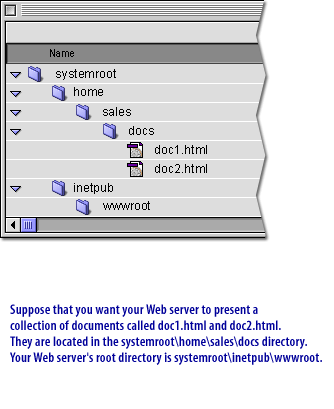
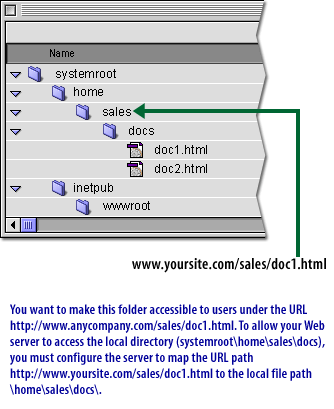
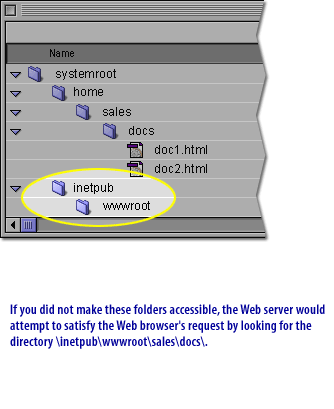
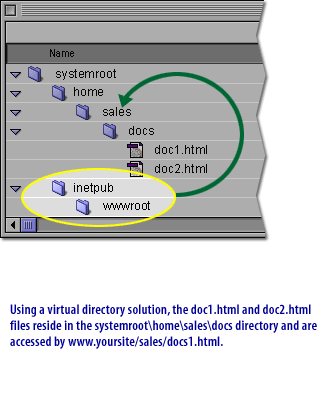
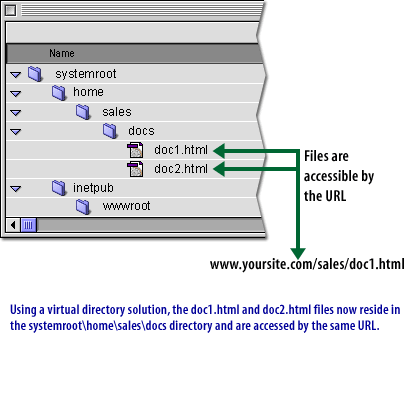
- Suppose that you want your web server to present a collection of documents called doc1.html and doc2.html. They are located in the systemroot\home\sales\docs directory.
- Make this folder accessible to users under the URL https://www.anycompany.com/sales/doc1.html.
- If you do not make these folders accessible, the web servers would attempt to satisfy the web browser's request by looking for the directory \Inetpub\wwwroot\sales\docs\.
- Using a virtual directory solution, the doc1.html and doc2.html files reside in the systemroot\home\sales\docs directory and are accessed by www.yoursite/sales/docs1.html
- Using a virtual directory solution, the doc1.html and doc2.html files now reside in the systemroot\home\sales\docs directory and are accessed by the same URL
IIS Virtual Directory
In the next lesson, we will discuss virtual servers.
In the next lesson, we will discuss virtual servers.